Air Crash Investigation Tenerife Airport Disaster 1977
#tenerifedisaster #KLM 4805 #Panam1736
A Boeing 747 was on its chartered flight to Canary Island, Spain. The flight was chartered on behalf of the Holland International Travel Group. On board the flight were 234 passengers and 13 crew members.
The aircraft took off from Schiphol en route to Las Palmas de Gran Canaria, Spain.
Another Boeing 747 operated by Panam was on its scheduled passenger flight to Gran Canaria Spain with an intermediate stopover in John F. Kennedy International Airport, New York City.
The flight left Los Angeles and landed at JFK without any notable events.
Flight 1736 tookoff for Las Palmas
de Gran Canaria.
Both of the aircrafts were heading towards Gran Canaria. While they were en route, a bomb exploded in the airport passenger terminal. So, the civil aviation authorities closed the airport temporarily, and all incoming flights bound for Gran Canaria had been diverted to Los Rodeos Tenerife.
The aircrafts landed at Tenerife with the difference of 35 minutes.
While waiting for Gran Canaria airport to reopen, the airplanes occupied so much space parking on the long taxiway. As a result, the taxiway was not available for taxiing. The departing aircraft needed to taxi along the runway to establish and position for takeoff.
When Gran Canaria airport opened to traffic, the Panam crew prepared for takeoff but at that moment the KLM 4805 was refueling ahead of them. It took about 35 minutes to refuel the aircraft.
Later, the passengers boarded the KLM flight but a Dutch family of four members were missing. Also, a tour guide had decided not to reboard for the flight to Gran Canaria.
The KLM was instructed to taxi down the entire length of the runway and make a 180 degree turn to get into takeoff position. The controller asked the KLM crew to report when they will be ready.
Then the Pan Am was instructed to follow the KLM down on the same runway and exit the runway by taking the third exit on their left.
The crew did not understand clearly as controller had told them to take the first or third exit.
The Panam crew successfully identified the first two taxiways but as the cockpit voice recordings, they did not indicate that they saw the third taxiway.
It was massive Boeing 747. To exit the runway through taxiways 2 and 3 was practically impossibe.
On the other side KLM crew informed ATC that they were ready to take off.
The Captain of KLM applied the takeoff thrust.
The flight Engineer of KLM tried to stop the captain telling him that Panam was not cleared yet but the captain ignored it.
The KLM collided with the Pan Am just as it was taking off. Both of the planes exploded and burst into flames. There were 583 people who died which made it the worst aviation accident ever.
There were no survivors on the KLM which was carrying 248 people.
Out of 396 people in Panam, 61 were able to survive.
The investigation was done by Civil Aviation Accident and Incident Investigation Commission Spain.
According to the investigators, the cause of the accident was that, KLM captain Van Zanten tried to take off without ATC clearance. It was certain that he was rushing to leave as soon as possible in order to comply with the strict KLM's duty-time regulations.
Another reason was the Interference from simultaneous radio transmissions.
When the KLM captain said that "we are going", the
ATC replied them OK Stand by for take off, I will call you
Simultaneously, Panam co-pilot said that they we're still taxiing down the runway.
These messages were not heard by the KLM crew.
The Pilots are required to learn Aviation English, which features around 300 words and instructions on when and how to use them.
The copilot, flight engineer and crew are given power to challenge the captain's decisions.
The words "take off" should never be used in an ATC clearance to avoid confusion with takeoff clearance.
This involved changing the name "ATC
clearance" for further clarity of the description of the route.
-
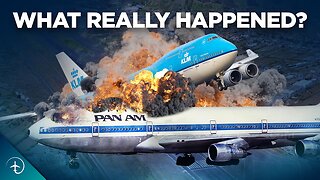 44:41
44:41
MentourPilot
8 months agoWhat REALLY Caused the Tenerife Airport Disaster?! The WORST Aviation Accident in History
170 -
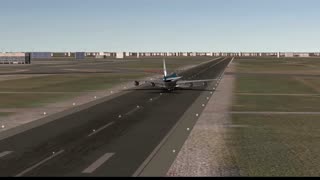 14:25
14:25
nishanthvikraman
1 year agoAviation Disasters Tenerife Airport Disaster
3 -
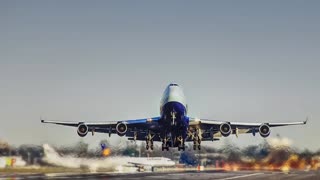 0:37
0:37
WORLD SOCIAL
5 years agoplane crash from air disasters
61 -
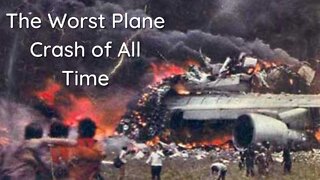 10:51
10:51
Unfamiliar History
2 years ago $0.01 earnedThe Tenerife Airport Disaster - Deadliest Plane Crash in History
44 -
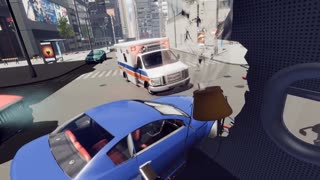 1:37
1:37
vincent98
2 years agoairplane crash
1273 -
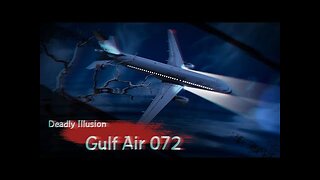 12:35
12:35
various videos
9 months agoAir Crash Investigation: Gulf Air 072
21 -
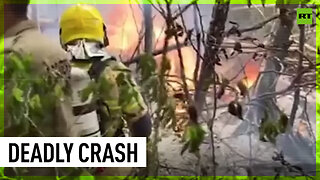 0:25
0:25
RT
7 months agoAirplane crashes in Brazil
3.2K6 -
 3:56
3:56
WhatDaStat
4 months agoAirplane Accidents 1919-2023
3 -
 1:23
1:23
sachinkharel
1 year agoPlane flying in remote area and crashed
3 -
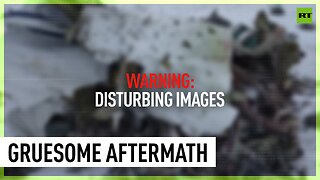 0:28
0:28
RT
4 months agoInvestigators work at site of Il-76 plane crash in Belgorod Region
3.78K6